News
Nearly 800 Years Later, the Fires of the Benin Bronze Casters Still Blaze
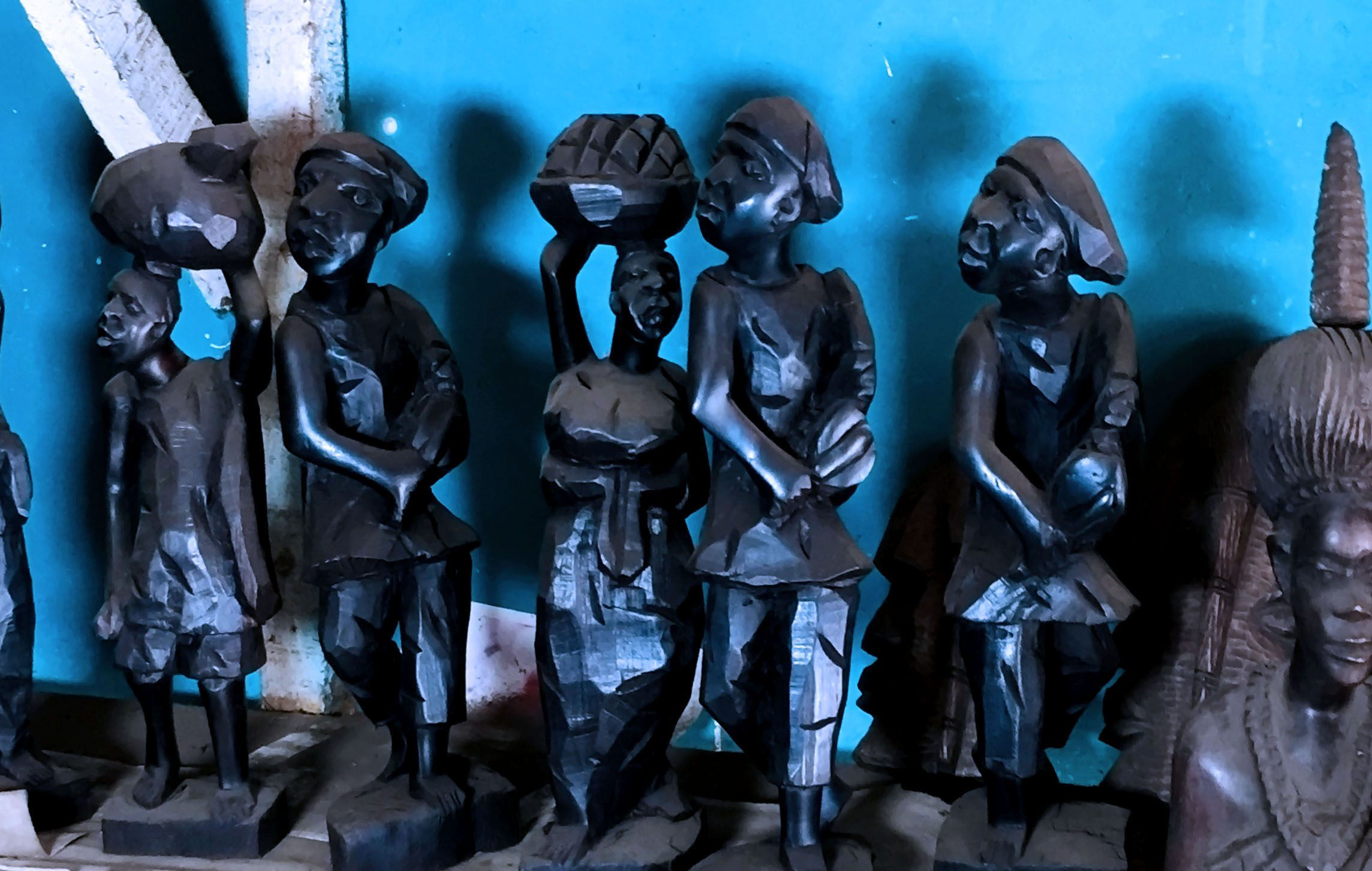 By Victor Eyike, bird story agency
By Victor Eyike, bird story agency
For bronze caster, Alex Agbonmwenre, the return of the Benin Bronzes is about far more than the return of looted artefacts. It is also a reminder that the craft, which found a patron in Benin 800 years ago, has continued through an unbroken lineage of master craftsmen, ever since. And those master craftsmen can be found today, in Igun Street, a UNESCO World Heritage site.
Standing in Igun street, the centre of African bronze casting for the past ten centuries, Alex Agbonmwenre could tell a story about the British forces that razed Edo and destroyed the Benin Empire, carrying off the famous bronze figures made for the court hundreds of years before, in this very street.
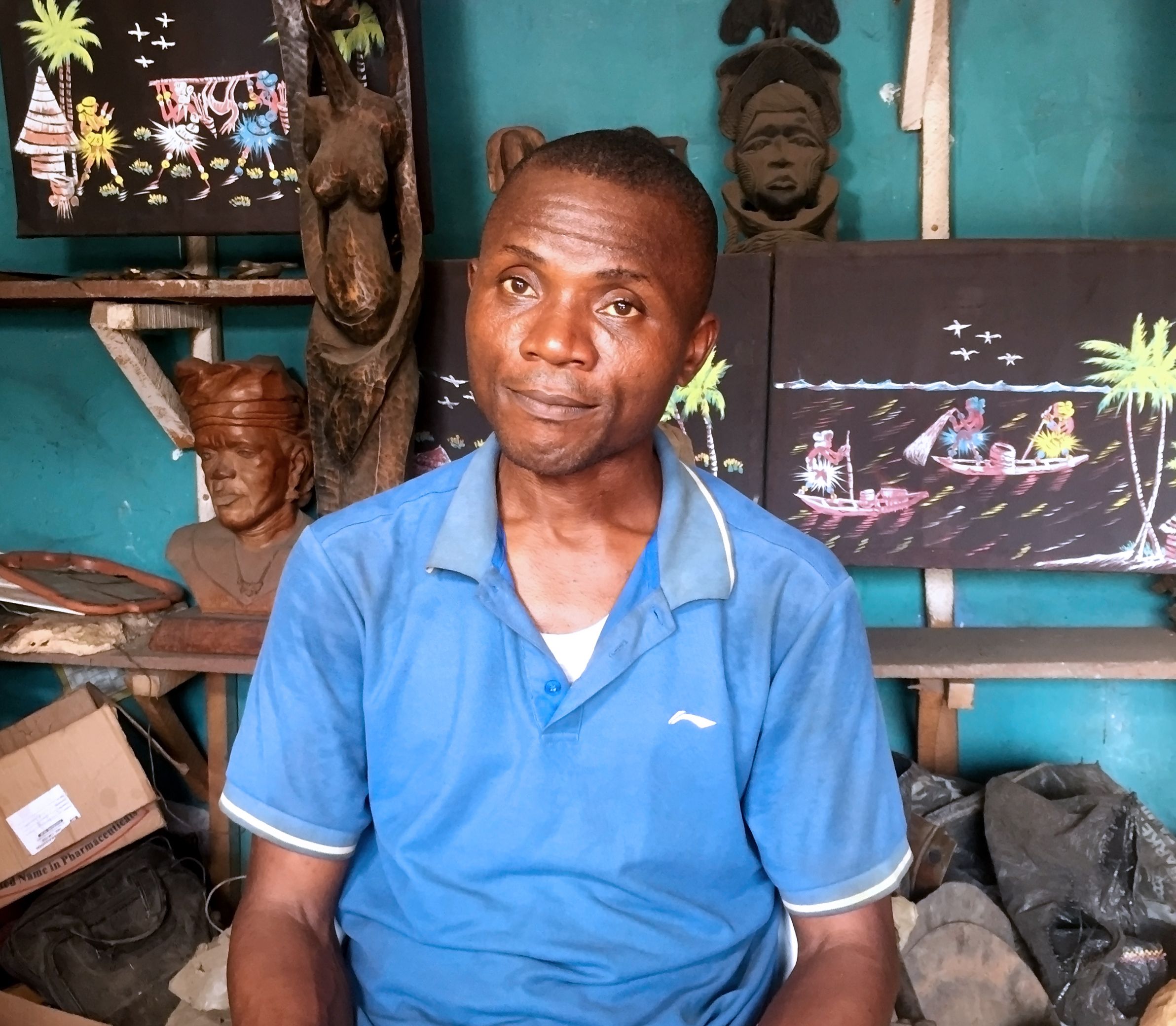
But as a bronze caster, he is focused on the story of the craft itself. And his story starts way before the arrival of the first Europeans in this part of the world. It begins with a skilled artisan arriving at a walled, well-organised city in around 1280, during the reign of Oba Ogualo.
“Igun street represents hundreds of years of traditional casting… Igun originated from Igungha, an immigrant from South Sudan who was passing through Benin City… but was arrested and labelled a spy,” explained Agbonmwenre.
“When the Oba of Benin questioned him, he confessed that he was not a spy but a brass smith artisan. The Benin Palace was impressed and instead of persecuting him, they gave him Igun as his base of operations.”
That origin story has several versions, as well it might, given that it is nearly 800 years old, but Igungha and Igun are common to all of them. Alongside Ifé, Oyo, and Dahomey, Benin was part of a number of west African kingdoms and civilisations that from the 12th century sprawled across what is today – thanks to colonial-era map drawers – southern Nigeria and the Republic of Benin. The Benin Empire was effectively brought to an end by the expeditionary force in 1897.
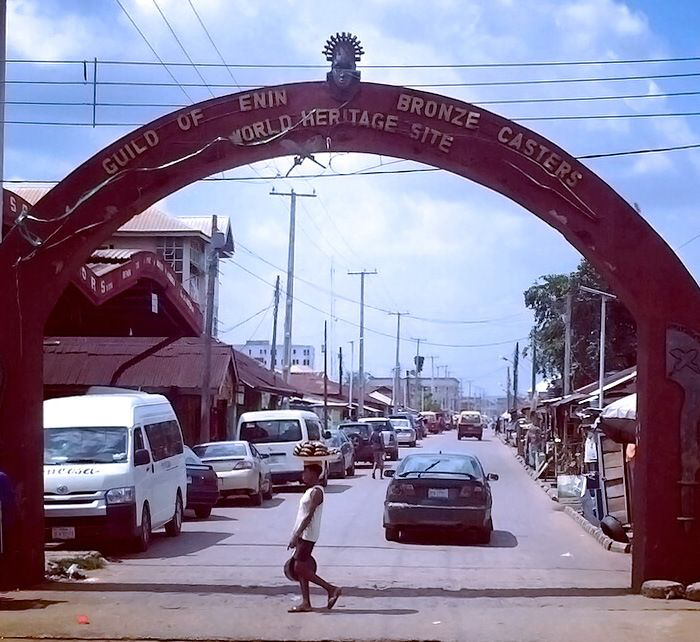
A few kilometres off the busy Ringroad Square in Benin City, in Edo State, Nigeria, today, Igun street seems ramshackle, some of the ancient buildings upgraded, others weather-beaten and still, almost defiantly, home to a long tradition of bronze casting and moulding. The street is listed as a World Cultural Heritage Site by the United Nations Scientific and Cultural Organization (UNESCO).
Lining many of the buildings constructed out of red sand, stand rows of artefacts on display, as if in supplication, waiting for a welcome approach from an admiring suitor.
Further down the road, an automobile garage interrupts the endless display of sculptures of all sizes and colours. At a shed next to a spare parts store, cars get attention from mechanics dressed in greasy overalls.
As the activities of the day kick off, at first slow and measured, the casters go through a number of religious rituals. They pay homage to their god of iron, before starting the casting process. Each has a shed to display their wares, which are cast in isolation, usually at the back of the sheds, where the casters enjoy a quiet environment to meditate while carrying out their work.
According to Agbonmwenre, 42, the casting process remains a highly private affair. It remains managed by the caster’s guild, the very same guild sanctioned by Oba Oguola all those hundreds of years ago when craftsmen’s guilds were the lifeblood of the city. The guild has guarded its secrets and kept bronze casting limited to a few families, all this time.

“This site is open to all, but we do not tolerate recording because unscrupulous people may steal our concepts and replicate them elsewhere,” he explained.
Agbonmwenre started casting while still a teenager.
“I started having a deep interest in sculpturing and bronze casting, when I was 16. Back then, our parents ensured we developed a particular skill. When every other person settled for Iron bending and other skills, I opted for bronze making,” he said.
“I moved here when I was 19. I have a space here where I practice my craft. My son also lives here and assists me with the process. Coming here, I had high expectations; I wasn’t scared because I knew I was coming to meet other casters. Igun is a street fully occupied by bronze casters.”
Agbonmwenre, who lives with his family in a compound on the street, explained that bronze casting is the process of pouring molten bronze into a hollow mould to create a positive bronze sculpture or object. Methods of bronze casting, like lost wax, ceramic shell, and sand casting, are used to produce bronze sculptures, instruments, medals, tools, plaques, and other art items.
“There is no rule when it comes to making your artefacts. I use the lost wax method where a precisely detailed wax model is formed over a clay core,” Agbonmwenre explained.
“When the model is complete, clay is carefully applied over the wax. It is then heated, melting the wax, which exits from a narrow channel. Next, molten metal is poured into the mould. Once cool, the hardened clay is chipped away, leaving behind an image now cast in bronze.”
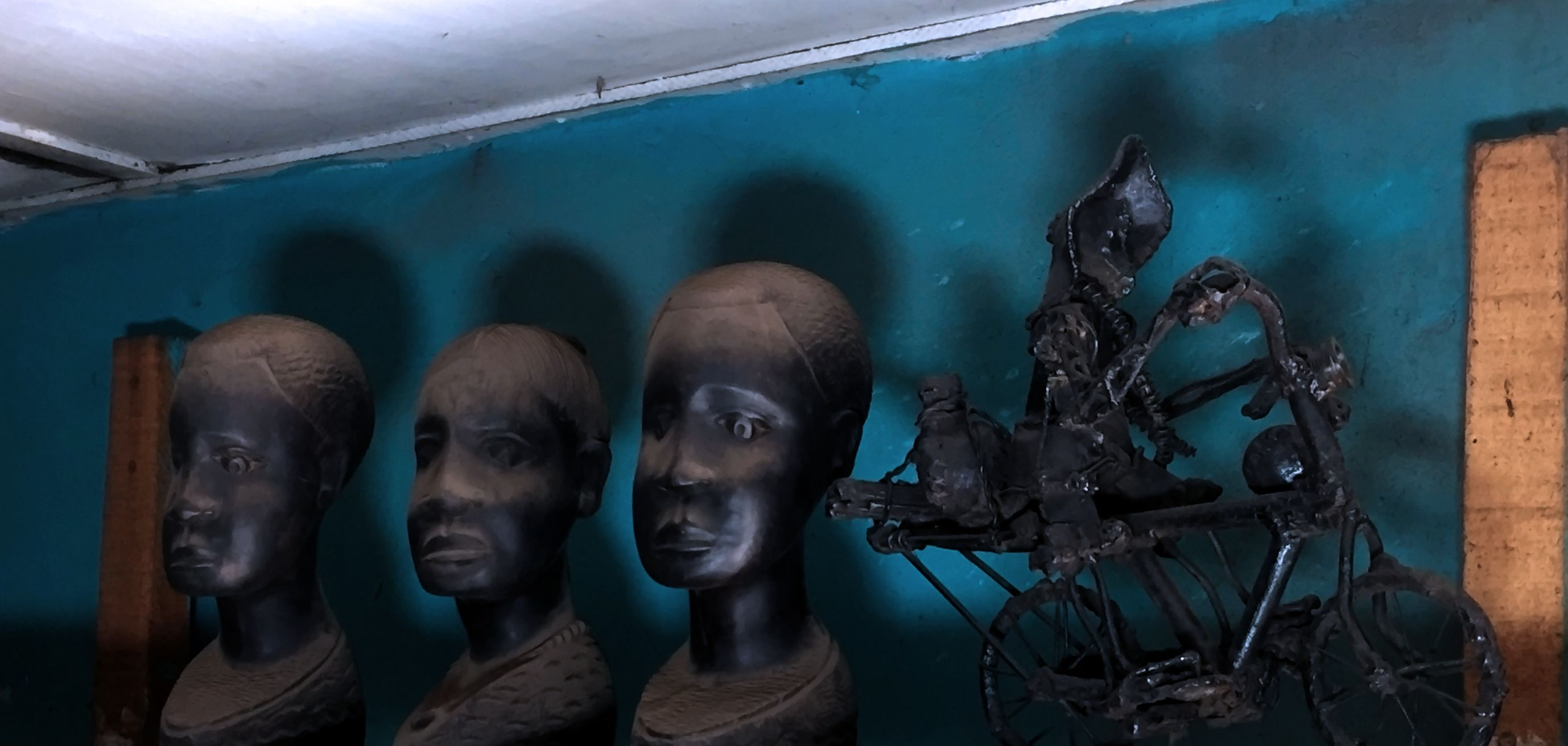
Agbonmwenre said life in the street is routine as all bronze casters usually go through the day casting, praying, and watching sports.
“There is unity here in Igun. We don’t see ourselves as competitors. I can’t estimate the number of casters here, but we are more than 20. We all have our sheds where we operate. Also, we all belong to the Igun Bronze Casters Guild, a union that protects our rights,” he added.
Other casters agreed to talk but declined to be named and appear on camera. They agreed that business was good.
“We don’t have problems when it comes to selling our works. We initially did our works for the Oba’s palace, but soon, other people became interested, and we started making sales,” said one of the casters.
For Agbonmwenre, although casting is a time-consuming and expensive process, it is a paying venture because of the demand, both locally and abroad.
“In a year, we produce about 50 bronze artefacts. I can’t estimate how much profit we make, but depending on what the clients want, we make a profit. Sometimes, we wait for a client to place an order before we start working. The industry is profitable,” he said.
Although there is no fixed price for the artefacts, the cheapest artwork costs 20,000 naira (around 50 US dollars).
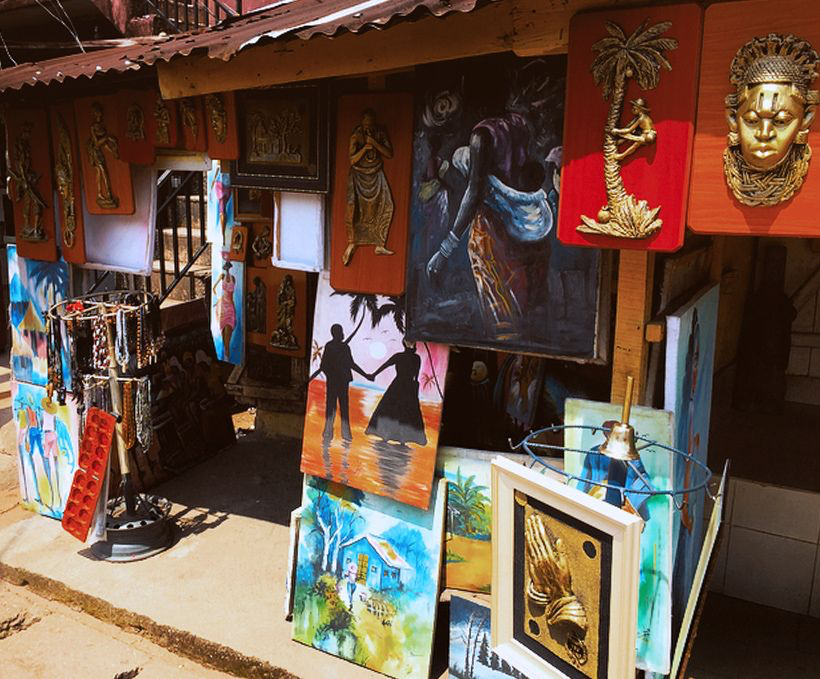
One of the customers, Tosin Aiyeni, travels from Lagos to Benin to purchase the artefacts and resell them at a higher price.
“Most of our customers are based in Lagos. So most times, we travel to Igun to purchase these artefacts and take them to Lagos to sell,” she said.
Another dealer, Austin Ebinedia, said he had been in the business for more than four years, and the trade paid his bills and provided enough income to live comfortably.
“I have been purchasing bronze artefacts for over four years, and Igun is special to my customers and me,” he said.
For Agbonmwenre, the secret is to ensure diversity in customers, with some buying directly for personal display purposes, others buying for institutions, as well as selling to dealers.
“People from different walks of life patronize us. Institutions and Individuals do contact us with intentions to buy,” he explained.
Ahmed Iredia, also a caster in Igun, explained that while bronze casting was important to the Edo State economy, it also offered a window into the past.
‘The Benin bronzes offer historians and archaeologists precious opportunities to understand better the empire in which they were created. While oral history and artistic heritage have long been central to Benin’s understanding of its past, the bronze adds to that rich cultural identity,” he said.
But even as Agbonmwenre and his fellow artisans go through their works, there is palpable excitement in the air about the return of the heritage items taken by the British in 1897.
The two largest collections of Benin Bronzes are located in the Ethnological Museum of Berlin and in the British Museum in London, while the third-largest collection is located in several museums in Nigeria.
“From history and what our forefathers told us, the British were extremely jealous and used force to take away the artefacts from the Oba’s Palace,” Iredia said.
In February 2022, two relics were returned to Nigeria. However, the government is pursuing the recovery of many more.
Sam Igbe, a ceremonial palace chief, welcomed the return.
“We are ready for the return of our cultural relics, and we have plans to ensure people can easily access them in a museum,” he said.
And one of those involved in the push for the return of the artefacts is Gold Iroh.
“We started the negotiations a long time ago. It was a leap of faith. Surprisingly, most of the European countries responded positively. I guess they realised the artefacts were special to us and significant to our heritage,” Iroh said.
For Agbonmwenre and others, while the return is a sign of Africa’s increasing assertiveness, the publicity surrounding the Benin Bronzes has had a more important effect. It has reminded Africans of the existence and importance of cultures and civilisations from an era prior to the colonial period. One to be proud of and which can be seen to this day – and which African from across the continent can come and see for themselves.
“The return will help eliminate a lot of myths surrounding these artefacts and make people understand that no spiritual or evil forces are attached to them. The return of the looted heritage is significant because of an upsurge of tourist visitations to this state, which will boost the economy,” said Agbonmwenre.



















